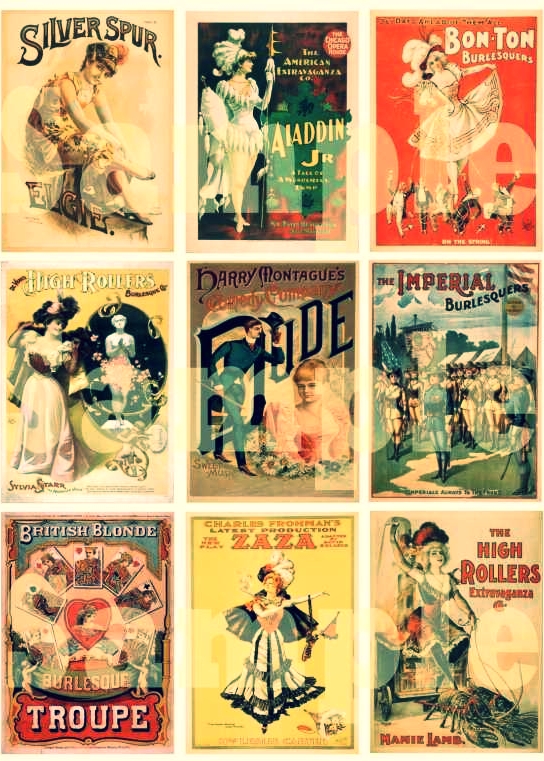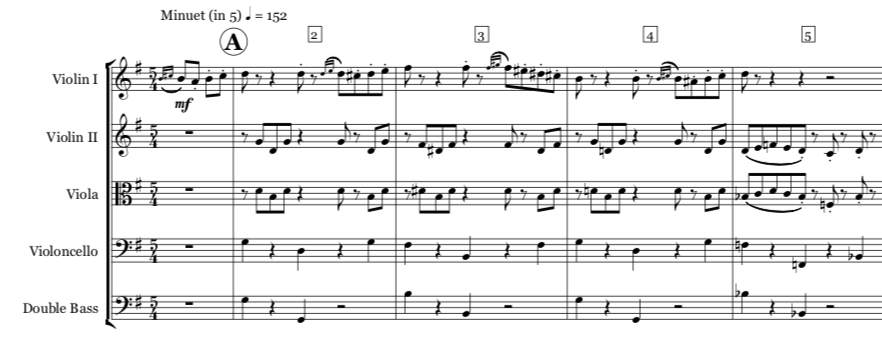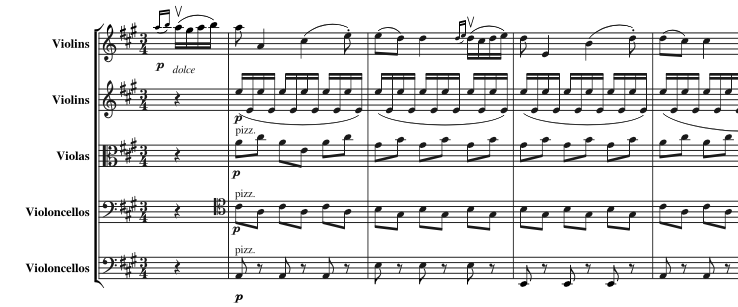“Victorian steampunk metropolis, a seductive string quartet, brooding basslines and mechanical percussion.”
Prior to writing this album, I’d been immersed in the small ensemble sound world of Wondrous Winds (you can read more about the journey I went on with this project here). Far from wanting to leave this world behind, I was keen to look for other projects with which I could continue exploring the craft of writing for smaller forces.
The idea for an album depicting an imagined journey through a Victorian steampunk metropolis had been brewing for some time, so after some initial creative chats with friends and other writers, I took the idea to the team at Audio Network.
Once sown, the seeds of this sound world quickly germinated. A natural starting point for me as a composer is it to think visually, and a gallery of dramatic scenes, characters and scenarios soon appeared in my mind’s eye. I was immersed in a world of Dickensian stories, curiosity shops and gas lit streets, Victorian parlours full of dances and bizarre games, backstreet Soho burlesque clubs and Bow Street Runners.
Shimmering dulcimers, plaintive fiddles, barrel organs, parlour pianos, mechanical clockwork percussion - these were the instruments and sounds I could hear accompanying my re-imagined 19th Century tableaux, played by a troupe of steampunk musicians.
Again, working closely with best creative minds at Audio Network, I crafted a brief that blended these vivid visual and musical elements into an exciting proposition.
So I set about composing a melodically driven, steampunk infused, quirky, vivid and dramatic ‘Victorian Melodrama’.
Introducing : the ‘Spither’, and other instruments
Necessity is the mother of invention, so they say. Early on in the writing process, having had no success in tracking down options for live dulcimer or zither playing, I inadvertently managed to invent a hybrid solution to the problem. I’m lucky to have a rather nice piano in the studio and I’d already had the idea of adding a sprinkling of effected or ‘prepared’ piano effects to some of the tracks. As I started to explore the range of sounds you can elicit from a piano using everything other than the conventional keys and hammers, I happily abandoned my previous notion of a mere sprinkling of effects. I was like an excited kid in a curiosity shop. Armed with a toolbox of beaters, brushes, strips of felt, cutlery and carefully placed fingers, I went on a playful week’s journey recording every conceivable sonic permutation. Oh my poor piano. Thus it was I discovered that a simple teaspoon when used as a hammer to strike the piano strings elicits an intriguing and very useable ‘zither-y’ sound. I called it a ‘Spither’:
As well as striking the piano strings with items of cutlery, it turns out that striking the casework (with soft beaters, obviously) generates some very interesting percussive timbres. Furthermore, striking the casework whilst holding down the sustain pedal turns the piano shell into a resonant chamber, thanks to the undamped strings which are free to vibrate in sympathy with each hit. The effect is a bit like a vintage spring or plate reverb:
Another effect that worked out rather well was a bell toll crafted from the sound of a soft beater striking the low strings. I found that using a felt beater resulted in a softer attack than when using the piano’s own hammers, and the quality of sound was more defined than when using the piano’s una corda (or soft) pedal because you could strike the strings from a distance (a piano’s una corda pedal achieves a softer sound by moving the hammers closer to the strings, therefore reducing the potential velocity). The bell-like overtones were created with the judicious use of a ring modulator, and were perfect for the ‘Big Ben’ type effect I was after in London By Lamplight:
Another piano effect featured in London By Lamplight is the multi-layered processing of long sustained notes. Inspired by images of London illuminated by gaslight, I’d already had the idea of building this track on top of a bed of shimmering pads. Harmonically this piece ended up using only two main chords (Fsus2 and Csus2). For each of these I layered up a dozen tracks comprising only the sustain portion of the chord as played on the piano. With some painstaking editing and the use of tremolator and auto-filter plug-ins, the resulting pads are indeed a key ingredient in this piece:
Other ‘prepared’ piano effects used throughout the album include placing various fabrics between the hammers and strings, muting strings with fabrics and fingers in order to generate specific harmonics, scraping the strings with plastic objects and one of my favourite effects, striking the strings with drum brushes:
I loved the idea that you could create re-imagined versions of existing instruments, eg. the ‘Spither’, and I continued to pursue this approach as I crafted each track. After all, the Victorian metropolis that I wished to portray is as much based on a re-imagined version of this period as it is the real thing.
Mechanical Melodrama
Alongside this mini orchestra of wild piano effects, mechanical percussion is another key ingredient. I always try to look for live alternatives to sample based instruments, and fortunately where clockwork instruments were concerned, I didn’t have to look far.
The family cuckoo clock was the perfect collaborator. I coaxed the familial timepiece down from the wall and embarked on an intense recording session during which I asked it to perform every possible articulation - click, clunk, clang, chuff, chief, whirr, wind and of course ‘cuck’ and ‘oo’. This furnished me with a terrific clockwork percussion toolbox in which I happily rummaged, finding all kinds of glitchy mechanical goodies to use across all seven tracks.
Melodious Melodrama
Victorian Melodrama’s main theme as it appears in Bow Street Runner - it crops up in most of the pieces.
In Little Dorrit’s Lament we hear it slowed right down and in 5 time.
With so much steampunk and mechanical percussion underpinning all the tracks I decided to keep the melodic elements simple. I hunted for a main theme which I could plunder for melodic material in most of the pieces. It had to be a bit jagged, ragged and intense so I enlisted the help of a minor key and a few tritones.
Four of the tracks are built almost entirely from this theme (Bow Street Runner, Little Dorrit’s Lament, Soho Sleaze & Ye Olde Curiosity Shoppe). It’s always fun to see what new material you can generate with a few simple transformations, for example shifting the downbeat, as in Soho Sleaze:
By shifting the downbeat, the main theme takes on a whole new flavour in Soho Sleaze
Or reversing/inverting the order of notes, which is what happens in Ye Olde Curiosity Shoppe:
The melody line (Viola) in Ye Olde Curiosity Shoppe is just a reversed or inverted form of the albums’ main theme.
What the Dickens…?!
There is one other theme that I developed for two of the pieces. I call it the ‘Dickens’ theme and it gets well and truly hammered in What The Dickens, but makes a less fevered more chilled appearance in London By Lamplight.
Melodically this 'Dickens’ theme uses (mostly) the notes C (for ‘Charles’) and D (for, yes that’s right, ‘Dickens’). For some reason I decided to set myself the challenge of writing a piece that used only these two notes. The results can be heard in What The Dickens. Cunningly, to make things a bit more interesting, I also spend a long time riff’ing on a rhythm that derives from the phrase “What the Dickens?”.
The ‘Charles Dickens’ theme
Appearing with a few extra notes in London By Lamplight
Parlour Games
This leaves us with Parlour Games, which melodically is something of an odd one out. This is because it has a melody and a groove that is in large part an homage to that classic of the chamber strings repertoire, Boccherini’s Minuet:
I always think of Boccherini’s dance as a perfect piece of salon music, so it made sense to summon up its musical spirit for Parlour Games, but with some added twists. The biggest twist being that instead of being in 3-time (as all minuets should be), I wrote my version in 5-time. For extra good measure I also took some deliberate ‘wrong turns’ in the harmony, like mischievous players deliberately changing the rules of the game.
Recording the antique washboard for Parlour Games
All this adds up to a track with plenty of quirks and a good deal of messing about, and quite right too. After all, the seemingly straightlaced Victorians loved playing decidedly silly parlour games. Here are a few of their favourites: Pass The Slipper, You’re Never Fully Dressed Without a Smile, Squeak Piggy Squeak, Cupid’s Coming and Dumb Crambo. This also seemed the perfect track on which to inflict my antique washboard.
All set up for the quintet session at Abbey Road
Fingerless gloves are an essential for any organ winter session in an unheated 12th Century church
Bows and Bellows
Alongside all this aforementioned prepared piano and clockwork mayhem, a string quintet is the third but no less crucial element, and its handling of all the above melodic themes provides the essential glue to the whole album. Recorded in Studio 2 at Abbey Road, with the acoustic bass in the newly refurbed isolation booth, we opted for some very close mic’ing in order to capture an edgy, rosinous sound, which seemed right for the cacophonous world I had created. Several weeks after the string session I wrapped up warm (it was winter by this stage), prepared several flasks of hot coffee and headed down to our tiny local church, where I happen to be the organist. Albeit only having one manual (keyboard) and a few stops, we’re lucky to have a working instrument in a church such as this.
Without recourse to a genuine barrel organ (and anyway, such organs are played using a punched paper roll, and I wouldn’t have a clue how to go about making such a thing), this little 19th Century organ proved to be a perfect substitute. You can hear it chuffing away in many of the tracks (I may also have used a touch of distortion here and there to steampunk it up a little).
I am indebted to Ren Swan for the care and artistry of his mixing, to the enthusiasm and dedication of the English Session Orchestra, and to Audio Network for once again enabling me to pursue my creative fancies. You can listen to the whole album below, and it’s available to purchase here











